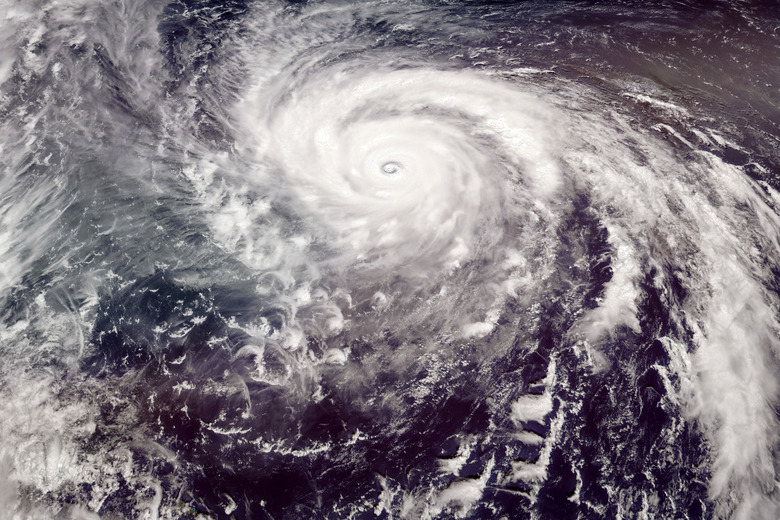The Effects Of A Cyclone
A cyclone is a system in which winds rotate inward toward an area of low atmospheric pressure. In the northern hemisphere, cyclones circulate counterclockwise and in the southern hemisphere they circulate in a clockwise direction. There are six types of cyclones, including what is typically referred to as hurricanes, as well as polar cyclones and mesocyclones. All types of cyclones are capable of causing massive destruction depending on where they strike.
Strong Winds in Cyclones
Strong Winds in Cyclones
Cyclones, especially those in the tropics, are known for their strong winds. These winds are typically stronger on the right side of the storm in the northern hemisphere, but even the weaker winds on the left side of the storm can cause major damage. In addition to wind speeds, gusts and sustained heavy winds affect how much damage is done. Flying debris also contribute to the effect of cyclone damage on populated areas.
A Dangerous Rain Event
A Dangerous Rain Event
As cyclones develop, they pull warm water from the oceans into their cloud systems. This precipitates out as heavy rainfall. Heavy rains associated with cyclones lead to flash floods, a major cause of deaths during a cyclone. Whether or not flooding will occur depends on how much rain the cyclone is putting out, the speed of the system and the geographical characteristics of the area. Even systems that are not putting out much rainfall can cause flash floods if they sit over a certain area of land for long periods of time. Soil that does not absorb water well, as well as mountains and hills that cause runoff and plants that prevent runoff, are all geographical characteristics that contribute to flash flooding.
Storm Surges
Storm Surges
Storm surges are caused by wind blowing across the open ocean. As waves build up speed and size, they become too big to crash against the beach without surging inland. Storm surge causes coastal flooding, especially in low-lying areas. As storm surges recede, they contribute to one of the prominent environmental impacts of cyclones: beach erosion. There are several factors that affect the size and strength of storm surges, including the slope of the ocean floor, the coastline's shape and the absence or presence of coral reefs.
Tornadoes: Another Type of Tropical Storm Damage
Tornadoes: Another Type of Tropical Storm Damage
Hurricanes, or tropical cyclones, frequently cause tornadoes – a weather phenomenon that isn't typically associated with the tropics. These tornadoes are formed as the hurricane crosses islands or coastlines. The wind force of a tornado, along with the sudden drop in pressure it causes, is responsible for much of the damage attributed to a tornado.
Cite This Article
MLA
Powell, Jack. "The Effects Of A Cyclone" sciencing.com, https://www.sciencing.com/effects-cyclone-8568132/. 22 November 2019.
APA
Powell, Jack. (2019, November 22). The Effects Of A Cyclone. sciencing.com. Retrieved from https://www.sciencing.com/effects-cyclone-8568132/
Chicago
Powell, Jack. The Effects Of A Cyclone last modified March 24, 2022. https://www.sciencing.com/effects-cyclone-8568132/
